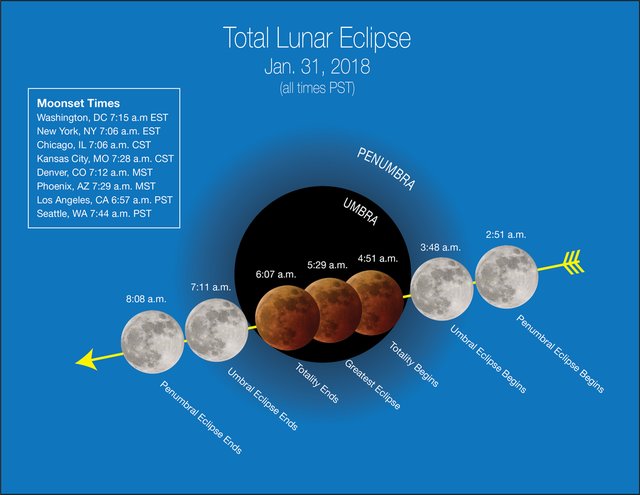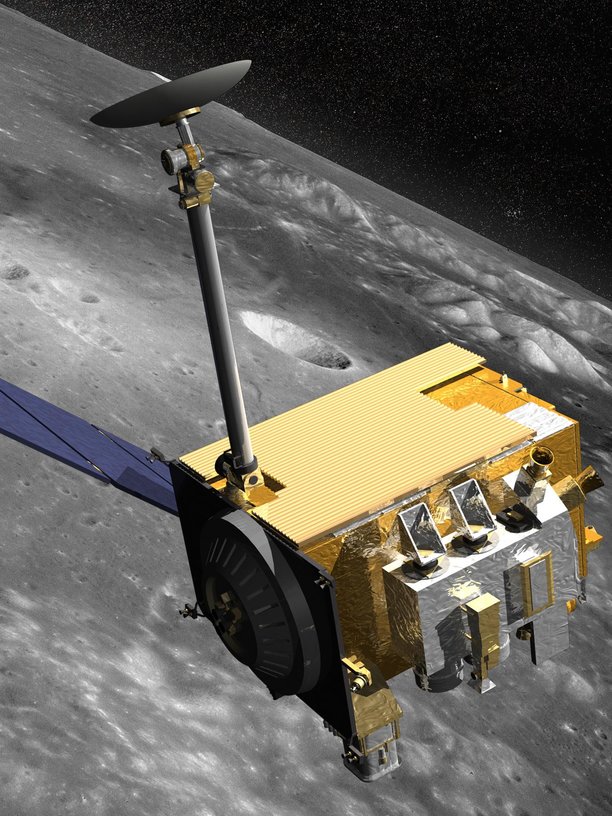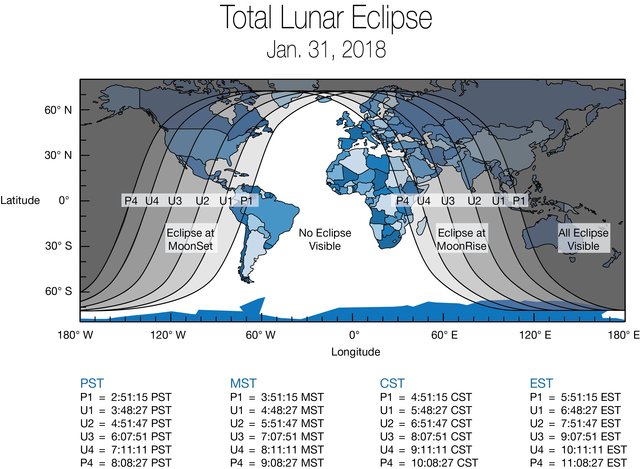Super Blue Blood Moon Will Force NASA to Shut Down Lunar Spacecraft Instruments
While skywatchers in North America, Asia, and Europe watch a bigger-than-usual lunar eclipse on January 31, NASA engineers will shut down the instruments aboard the Lunar Reconnaissance Orbiter (LRO).
Eclipses put a strain on the spacecraft because it uses the sun for power. If the moon is in the Earth's shadow, sunlight can't reach it and LRO switches to battery power, principal investigator Noah Petro told Seeker. The LRO team is a veteran group at keeping the spacecraft safe, as total lunar eclipses have occurred seven times since the orbiter's launch in 2009. [Super Blue Blood Moon 2018: When, Where and How to See It]
"We did a small [engine] burn to put us in an as optimal position as possible — to be able to keep the spacecraft in illumination for as long as we could. In other words, we did a small tweak to minimize the time we were in shadow," Petro said. As with past eclipses, the team will also "preheat" the spacecraft before it goes into the eclipse, so it's warmer and there is less strain on the instruments.
While LRO has seen many other eclipses, the eclipse, know as "super blue blood moon eclipse," is a rare combination of several phenomena.
A "supermoon," occurs when the moon is full and is at its closest approach to Earth in its 29 1/2-day elliptical orbit around the planet. Supermoons are 14 percent larger and 30 percent brighter than the moon at its furthest distance from Earth, according to NASA.
When two full moons occur in a single month, the second event is called a "blue moon." It has no special astronomical significance, but blue moons are still interesting because they occur only once every 2 1/2 years.
A lunar eclipse happens when the Earth passes between the moon and the sun, and the shadow of Earth falls across the moon's surface. Partial and full eclipses are possible. A full eclipse occurs when the moon is fully covered in shadow — which will happen January 31. The combined light of all of Earth's sunrises and sunsets creates a ruddy glow on the moon's surface. Some people call this the "blood moon."
Breaking space news, the latest updates on rocket launches, skywatching events and more!
Petro said shut down LRO's instruments is just an extra precaution to ensure the 8-year-old spacecraft remains safe during the event. During past eclipses, however, LRO continued to collect data.
The spacecraft is designed to take high-resolution pictures of the moon: It's even seen the Apollo landing sites where astronauts undertook moonwalks in the 1960s and 1970s. Other instruments probe lunar ice reserves. LRO data recently helped to identify underground pits of polar ice, which might provide future moon missions with water. And LRO's Diviner Lunar Radiometer Experiment (DLRE) looks at regolith — aka soil — temperatures.
During a few eclipses, LRO engineers left Diviner on to see what it could find. Normally, the instrument examines temperatures in the top layer of soil — approximately a few tens of centimeters. During an eclipse, however, only the layer just below the surface — about 1 cm to 2 cm — changes temperature rapidly. So eclipses provide a rare opportunity for Diviner to focus its observations on soil just below the surface.
Diviner focuses, whenever possible, on the moon's youngest craters. Investigators are interested in the lumpiness of the regolith: What is the size of grains of soil near the surface, or is the soil rocky or fine-grained soil? Petro said this is important because "it gives us a better understanding of how impacts modify the surface."
That's not only exciting for moon science, but solar system science in general, Petro said. There are all sorts of "airless" bodies around the solar system covered with craters. Examples include the planet Mercury, dwarf planets Ceres and Pluto, and asteroids such as Vesta. Learning about soil grain size on the moon can help scientists better understand how regolith works on these other worlds.
While NASA will shut down Diviner during the eclipse, Petro said the regolith science will continue. He is in talks with two astronomers in Hawaii who will monitor the regolith temperatures from the ground using infrared instruments.
RELATED: Ice From Underground Lava Tubes Offers Possible Water Supply for Moon Missions
There are seven instruments aboard LRO and they remain in good health, according to Petro. The spacecraft is currently slated to end operations in 2019, but Petro and his team are preparing a proposal to extend LRO's mission by another three years.
Petro said LRO's mission to the moon has already yielded interesting long-term science, such as how often craters appear on the surface. That's why he's an advocate for keeping the mission running as long as possible.
"It's really a new era for studying the moon," Petro said. "With this long baseline of observations, we're able to see how the moon changes."
Originally published on Seeker.

Elizabeth Howell (she/her), Ph.D., was a staff writer in the spaceflight channel between 2022 and 2024 specializing in Canadian space news. She was contributing writer for Space.com for 10 years from 2012 to 2024. Elizabeth's reporting includes multiple exclusives with the White House, leading world coverage about a lost-and-found space tomato on the International Space Station, witnessing five human spaceflight launches on two continents, flying parabolic, working inside a spacesuit, and participating in a simulated Mars mission. Her latest book, "Why Am I Taller?" (ECW Press, 2022) is co-written with astronaut Dave Williams.



